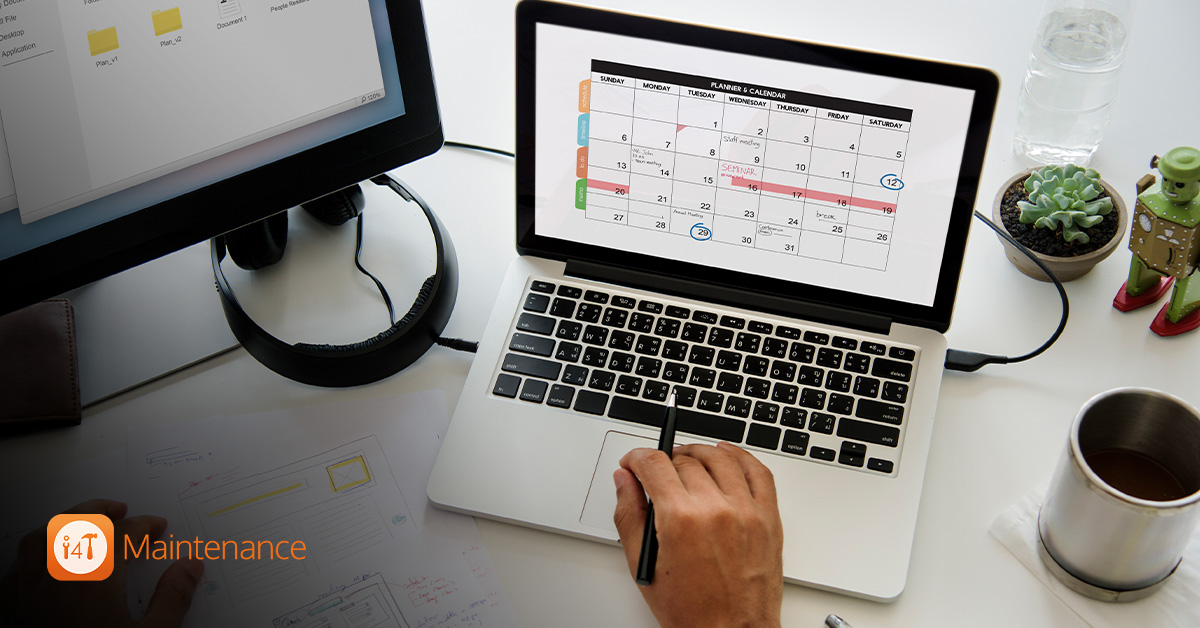Strata property management can be a balancing act, but one thing is clear: regular maintenance is key to maintaining and increasing property value. Consistent upkeep prevents costly repairs, improves tenant satisfaction, and ensures your property remains compliant and safe.
In this article, we’ll explore how a solid maintenance scheduling plan can protect your investment, reduce risks, and keep things running smoothly. By the end, you’ll see how simple, proactive maintenance can go a long way in maximising the value of your strata property.
The Impact of Regular Maintenance on Strata Property Value
Regular maintenance is more than just a box to tick off. It’s a key factor in protecting and enhancing the value of your strata property. A well-maintained property not only attracts better tenants but also holds its value over time, making it a smarter investment in the long run.
When maintenance is left to pile up, small issues can escalate into major problems. A leaking roof or faulty plumbing, if not addressed promptly, can lead to significant damage that requires expensive repairs. Worse still, the cost of neglecting maintenance can erode the property’s market value and turn away prospective buyers or tenants.
On the flip side, properties that are well-cared-for tend to appreciate more consistently, as they’re seen as less risky investments. For example, regular inspections and prompt repairs show potential buyers or tenants that the property is in good hands, providing them with peace of mind and confidence in their decision. When they know that the property is maintained to a high standard, they’re more likely to value it at a premium.
Maintenance Scheduling vs. Maintenance Planning: What’s the Difference?
While both maintenance scheduling and maintenance planning are important, they serve different roles:
Maintenance Scheduling
Scheduling is all about timing and responsibility. It’s the process of setting specific dates for maintenance tasks (like inspections, repairs, or cleaning) and assigning them to the right person or contractor. For example, scheduling a monthly HVAC check or an annual roof inspection.
Maintenance Planning
Planning, on the other hand, is about strategy. It involves deciding what needs to be done, why it’s important, and how to plan for future needs. This could mean deciding when to replace an old roof, budgeting for long-term repairs, or planning for upgrades
| ASPECT | MAINTENANCE SCHEDULING | MAINTENANCE PLANNING |
|---|---|---|
| Focus | When tasks are done, and who will do them | What tasks need to be done and why, for long-term upkeep |
| Purpose | To set specific dates and assign responsibilities | To strategize long-term maintenance needs and budgets |
| Key Tasks | Setting dates for inspections, repairs, and routine tasks | Deciding when to replace systems, planning upgrades |
The Benefits of Regular Maintenance Scheduling for Strata Managers

When it comes to managing strata properties, a proactive approach to maintenance is a game-changer. Regular maintenance scheduling offers a wealth of benefits, not just for property owners, but for strata managers too.
Maintenance scheduling is all about keeping the wheels turning smoothly, preventing headaches down the track, and ultimately adding value to the property.
Let’s break down how scheduling regular maintenance can benefit everyone involved:
Saving Time and Money
One of the biggest advantages of maintenance scheduling is the ability to focus on preventative maintenance. By regularly checking key systems, such as plumbing, electrical, and HVAC, you’re able to identify small issues before they escalate into major, costly repairs. Think of it like servicing your car: catching a small issue early means you avoid a breakdown later. By staying ahead of the curve, you save both time and money in the long run.
Keeping Tenants Happy
A well-maintained property is a happy property. Tenants appreciate when things are taken care of promptly, whether it’s fixing a leaking tap, maintaining common areas, or ensuring the property’s safety systems are up to scratch. Happy tenants mean fewer complaints, better retention rates, and a property that runs like a well-oiled machine. Plus, a reputation for excellent upkeep can attract quality tenants, who are often willing to pay a bit more for a property that’s in great shape.
Avoiding Risks
Regular maintenance isn’t just about aesthetics, it’s also about staying compliant with safety and legal requirements. In Australia, strata properties are subject to a range of building and safety codes, and failing to meet these regulations can lead to hefty fines or legal trouble. Maintenance scheduling ensures that your property is always in line with local laws, from fire safety checks to elevator servicing. It also reduces the risk of accidents, protecting both tenants and the property itself.
Streamlining Operations
With a proper maintenance schedule in place, strata managers can streamline operations and avoid last-minute scrambles. It helps you prioritise tasks, allocate resources more effectively, and avoid overlap or confusion. Plus, it ensures that all maintenance activities are tracked, so nothing falls through the cracks. From roof inspections to garden maintenance, having a clear, organised system makes everything run smoothly and reduces stress.
Key Components of Effective Maintenance Scheduling
Creating an effective maintenance schedule doesn’t have to be complicated. It’s about organisation and prioritisation.
Here’s how to get it right:
Identifying High-Priority Tasks
Not all maintenance is urgent. Prioritise tasks like roof inspections, plumbing, and electrical checks, while tasks like gardening or repainting can be done less frequently. This way, you focus on the most crucial areas first.
Setting Up a System
Whether it’s a digital calendar or a simple spreadsheet, having a clear system to schedule tasks is vital. Group tasks by frequency (e.g., seasonal, annual) so you can plan ahead without missing anything.
Tracking and Record-Keeping
Keep detailed records of all maintenance activities. This helps you track the property’s condition over time and proves compliance with safety standards.
Coordinating with Contractors
A good schedule makes it easier to coordinate with contractors, ensuring jobs are done on time and with minimal disruption to tenants.
Flexibility is Key
While sticking to a schedule is important, be ready for unexpected issues. Flexibility in your planning lets you tackle emergencies without throwing the whole schedule off track.
By prioritising tasks, staying organised, and keeping good records, your maintenance schedule will run smoothly, helping maintain your property’s value efficiently.
Common Challenges in Strata Property Maintenance
Even with a solid plan in place, strata property maintenance isn’t always without its bumps.
Here are a few challenges you might face, and how to tackle them:
Resource Management
Managing budgets, time, and manpower across multiple tasks can get tricky. The key is prioritising; focus on the most urgent jobs first and plan ahead to ensure resources are used wisely.
Coordinating with Tenants
Trying to schedule maintenance around tenants’ availability can cause a few headaches. A little notice goes a long way, keeping tenants in the loop about upcoming work helps minimise disruptions and keeps everyone happy.
Tracking and Reporting
With several buildings or areas to maintain, it’s easy to lose track of tasks. A good tracking system ensures you’ve got a clear view of what’s done and what’s next, so nothing gets missed.
Unexpected Repairs
Emergencies like a burst pipe or weather damage are inevitable. When they happen, flexibility is key. Being ready to adapt your schedule ensures you can handle these unexpected repairs without missing a beat.
By staying organised, communicating clearly, and planning ahead, you can easily navigate through your maintenance schedule and keep everything running smoothly.
Optimising Strata Maintenance with Technology
In today’s digital world, technology has become an essential ally in managing strata property maintenance.
Gone are the days of juggling paper schedules and manual checklists; modern maintenance management software is here to make life much easier.
Here’s how embracing tech can transform your approach to strata maintenance:
Centralised Management at Your Fingertips
Managing maintenance for multiple buildings or common areas can get a little chaotic. But with software, everything you need is in one place. You can track tasks, monitor progress, and keep an eye on what’s coming up, all in a single dashboard. This centralised system helps you stay organised and ensures no area is overlooked.
Real-Time Updates and Reminders
Ever forgotten about a scheduled task? It happens. But with maintenance software, you’ll never miss a beat. The system sends you real-time updates and automated reminders for upcoming tasks, whether it’s an inspection or routine servicing. That way, you’re always on top of things, and nothing slips through the cracks.
Better Communication with Contractors and Tenants
Coordinating with contractors and keeping tenants informed can sometimes feel like a full-time job. Thankfully, software makes it easy to communicate. You can share schedules with contractors, track progress on repairs, and notify tenants about upcoming work, all with just a few clicks. It helps you manage everything smoothly and keeps everyone in the loop, reducing the chances of complaints or confusion.
Data That Helps You Make Smarter Decisions
One of the real perks of using software is the ability to track and analyse data. You can see what’s been repaired, how much you’ve spent, and even how often certain systems need attention. This historical data gives you valuable insights, helping you make smarter decisions about future maintenance, budgeting, and whether it’s time to upgrade certain systems.
Effortless Reporting and Compliance Tracking
Keeping track of legal requirements and safety checks is crucial for any strata property, and software makes it a breeze. With automatic reporting, you can easily generate records of completed tasks, inspections, and compliance checks, ensuring you’re always meeting the necessary regulations. It saves you time and helps keep the property in tip-top shape, all while keeping you on the right side of the law.
Over to you
When it comes to maximising the value of your strata property, regular maintenance scheduling is a must.
From preventing expensive repairs to keeping tenants happy and ensuring safety compliance, maintaining a solid schedule helps protect your investment and ensure smooth, long-term operation.
By prioritising tasks, staying organised, and tackling challenges head-on, you’ll keep everything running efficiently and avoid those dreaded last-minute crises. And while traditional methods can get the job done, the real game-changer comes with strata maintenance management software.
Tools like i4T Maintenance can take your scheduling to the next level, automating reminders, tracking progress, and helping you stay on top of every maintenance task with ease.
So, if you’re ready to streamline your maintenance process, reduce risks, and maximise the value of your strata property, adopting software is the way forward. A little tech goes a long way in making maintenance management easier, more organised, and far more effective.
FAQs
It’s the process of setting specific dates and assigning tasks to ensure regular maintenance is done on time.
It helps prevent costly repairs, keeps tenants happy, and ensures the property remains safe and compliant.
It depends on the task, but common checks like HVAC servicing should be done monthly, while major inspections (e.g., roof checks) might be annual.
Scheduling is about when and who will do tasks, while planning focuses on what needs to be done long-term and why.
Yes, software like i4T Maintenance can streamline scheduling, track tasks, and ensure nothing gets missed.

